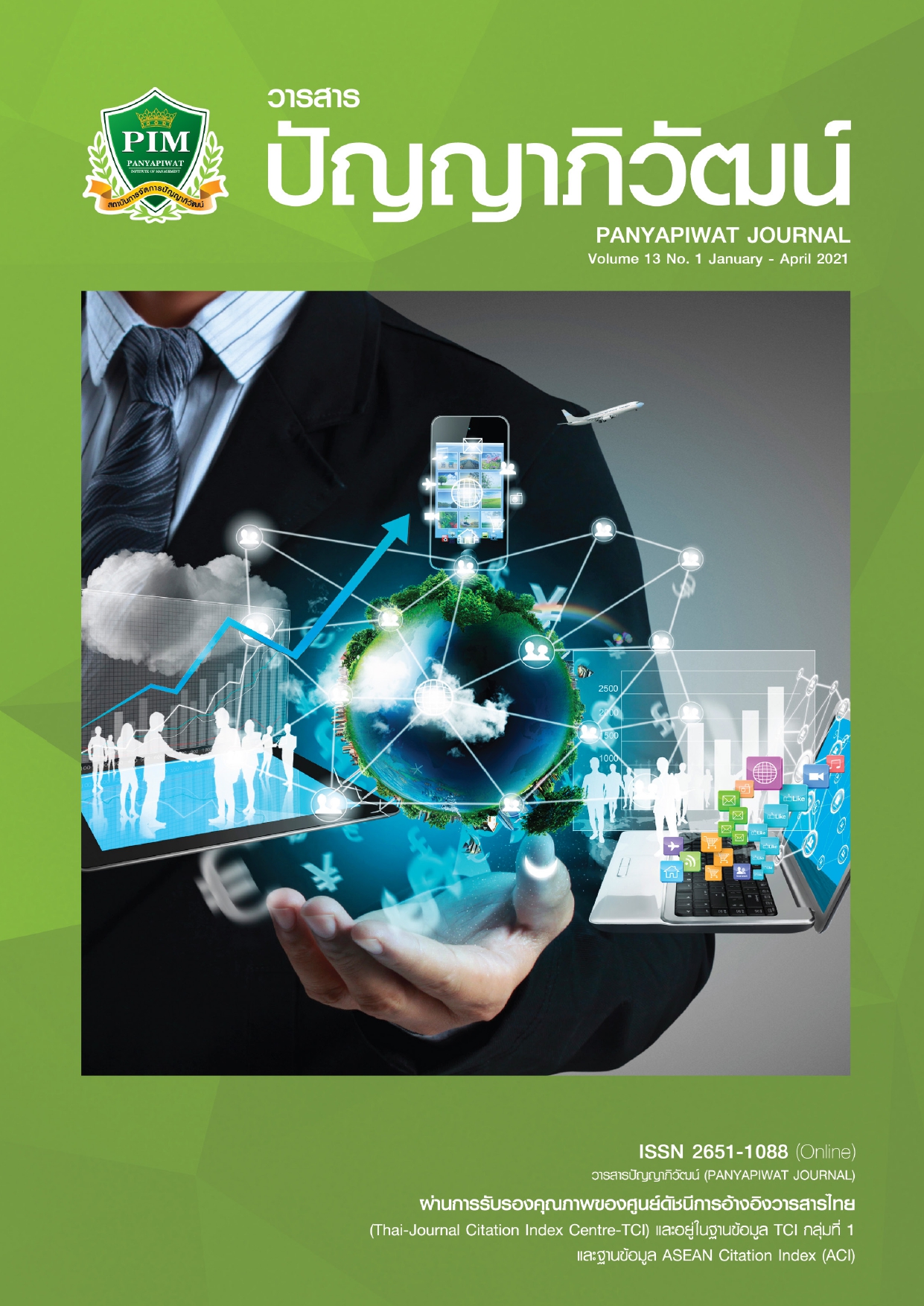การวิเคราะห์ความน่าจะเป็นของการใช้บริการท่องเที่ยวเชิงสุขภาพ ของนักท่องเที่ยวที่เดินทางมาท่องเที่ยวในอำเภอเบตง จังหวัดยะลา
Main Article Content
บทคัดย่อ
งานวิจัยนี้มีวัตถุประสงค์เพื่อศึกษาความน่าจะเป็นของการเลือกใช้บริการท่องเที่ยวเชิงสุขภาพของ นักท่องเที่ยวที่เดินทางเข้ามาท่องเที่ยวในอำเภอเบตง จังหวัดยะลา ซึ่งเป็นหนึ่งในเมืองต้นแบบ “สามเหลี่ยม มั่นคง มั่งคั่ง ยั่งยืน” ของรัฐบาล โดยใช้วิธีการศึกษาเชิงปริมาณ ด้วยแบบจำลองโลจิต ประชากรที่ใช้ศึกษาคือ นักท่องเที่ยวชาวไทยและชาวมาเลเซียที่เดินทางมาท่องเที่ยวในอำเภอเบตง จังหวัดยะลา ผลการศึกษา พบว่า บริการท่องเที่ยวเชิงสุขภาพในพื้นที่มีสัดส่วนการเลือกใช้บริการของนักท่องเที่ยวอย่างมีนัยสำคัญ ทางสถิติ ประกอบด้วย 1) บริการบ่อนํ้าร้อนเบตง 2) บริการสปาและเสริมความงาม 3) บริการนวดแผนโบราณ 4) การท่องเที่ยวเชิงศาสนา 5) การอ่านหนังสือ ฟังเพลง ชมงานศิลปะ 6) การเดินป่า ปั่นจักรยาน ปีนเขา ชมธรรมชาติ 7) การเยี่ยมชมโบราณสถาน ชุมชนท่องเที่ยว 8) บริการอาหาร โภชนาบำบัด และอาหารท้องถิ่น และ 9) บริการตรวจสุขภาพ นอกจากนี้ปัจจัยที่ส่งผลต่อความน่าจะเป็นของการเลือกใช้บริการการท่องเที่ยว เชิงสุขภาพแต่ละประเภทอย่างมีนัยสำคัญทางสถิติ ประกอบด้วย สัญชาติ เพศ อายุ ศาสนา ระดับการศึกษา อาชีพ ระดับรายได้ ช่องทางการรับรู้ข้อมูล ลักษณะการเดินทางท่องเที่ยว ที่พักแรม และค่าใช้จ่ายในการท่องเที่ยว
Article Details
“ข้าพเจ้าและผู้เขียนร่วม (ถ้ามี) ขอรับรองว่า บทความที่เสนอมานี้ยังไม่เคยได้รับการตีพิมพ์และไม่ได้อยู่ระหว่างกระบวนการพิจารณาลงตีพิมพ์ในวารสารหรือแหล่งเผยแพร่อื่นใด ข้าพเจ้าและผู้เขียนร่วมยอมรับหลักเกณฑ์การพิจารณาต้นฉบับ ทั้งยินยอมให้กองบรรณาธิการมีสิทธิ์พิจารณาและตรวจแก้ต้นฉบับได้ตามที่เห็นสมควร พร้อมนี้ขอมอบลิขสิทธิ์บทความที่ได้รับการตีพิมพ์ให้แก่สถาบันการจัดการปัญญาภิวัฒน์หากมีการฟ้องร้องเรื่องการละเมิดลิขสิทธิ์เกี่ยวกับภาพ กราฟ ข้อความส่วนใดส่วนหนึ่งและ/หรือข้อคิดเห็นที่ปรากฏในบทความข้าพเจ้าและผู้เขียนร่วมยินยอมรับผิดชอบแต่เพียงฝ่ายเดียว”
เอกสารอ้างอิง
Brida, J. G. & Scuderi, R. (2013). Determinants of Tourist Expenditure: A Review of Microeconometric Models. Tourism Management Perspectives, 6, 28-40
Global Wellness Institute. (2018). Global Wellness Economy Monitor. Retrieved November 21, 2019, from https://globalwellnessinstitute.org/wp-content/uploads/2019/04/GWIWellnessEconomyMonitor2018_042019.pdf
Global Wellness Institute. (2013). The Global Wellness Tourism Economy 2013. Retrieved November 21, 2019, from https://www.globalwellnesssummit.com/images/stories/pdf/wellness_tourism_economy_exec_sum_final_10022013.pdf
Kaewchaluay, C. (2011). The Development of Wellness Tourism Activities: The Case Study of Hot Spring in Kampangpetch Province. Master of Arts (Tourism Management), Naresuan University. [in Thai]
Kaewmanee, R. (2017). Industrial Potential in Southern Area: The Role Model City “The Stability, Prosperity and Sustainability Triangle”. Retrieved December 15, 2018, from http://www.oie.go.th/sites/default/ files/attachments/article/wealth_triangle.pdf [in Thai]
Kaewngam, K. & Jongwilaikasaem, W. (2019). Betong: Strategies of the Tourism Communication Under the Violence Crisis in the Three Southern Border Provinces. Journal of Communication Arts, 37(3), 40-50. [in Thai]
Mak, A. H. N., Wong, K. K. F., & Chang, R. C. Y. (2009). Health or Self-indulgence? The Motivations
and Characteristics of Spa-goers. International Journal of Tourism Research, 11(2), 185-199.
Medina-Munoz, D. R. & Medina-Munoz R. D. (2012). Determinants of Expenditures on Wellness Services: The Case of Gran Canaria. Regional Studies, 43(3), 309-319.
Ministry of Tourism and Sport. (2018). Domestic Tourism Statistics Q1-Q4 Classify by Region and Province. Retrieved December 15, 2018, from https://www.mots.go.th/News-link.php?nid=12102 [in Thai]
Ministry of Tourism and Sport. (2016). Wellness Tourism. Tourism Economic Review, 3, 30-43. [in Thai]
National Strategy Committee. (2015). National Strategy. Royal Thai Government Gazette, 135(82a), 1-71. [in Thai]
Ninbai, T. (2012). Applications in Econometrics. Bangkok: Ramkhamhaeng University. [in Thai]
Pasunon, P. (2015). Validity of Questionnaire for Social Science Research. Journal of Social Sciences Srinakharinwirot University, 18, 375-396. [in Thai]
Pathumporn, J. (2017). Factors Effected the Decision Making in Utilizing Wellness Services of International Tourists in Hua-Hin Thailand. College of ASIAN Scholars Journal, 7(2), 95-106. [in Thai]
Poomapinun, P. & Virakij, Y. (2018). Behaviors and Incentive of Chinese wellness Tourists in Phuket. Human Resource and Organization Development Journal, 10(2), 89-109. [in Thai]
Promburom, T. & Kimpakorn, N. (2015). Factors Affecting Tourist Experience of Eco, Culture, and Wellness Tourism in the upper Northern Provincial Cluster 1 of Thailand: Chiang Mai, Lamphun, Lampang, Mae Hong Son. Journal of Thai Hospitality & Tourism, 10(1), 71-87.
[in Thai]
Sirisuthikul, V. (2014). The Survey of Preference and Brand Royalty of Foreign Tourists in Wellness Business in Thailand in order to develop strategies for being wellness tourism hub in ASEAN Economic Community. Bangkok: Srinakharinwirot University. [in Thai]
TAT Intelligence Center, (2019). International Tourist Arrivals to Thailand by Port of Entry. Retrieved November 21, 2019, from https://intelligencecenter.tat.or.th/ [in Thai]
Tezak, A., Saftic, D., & Persuric, A. S. (2011). Influence of Wellness in Selecting Tourism destination. The 5th International Scientific Conference-Entrepreneurship and Macroeconomic Management: Reflections on the World in Turmoil (pp. 1918-1933). Pula, Croatia: CROSBI Hrvatska Znanstvena Bibliografija.
Voit, C. (2010). Health Tourism in Australia: Supply, Demand and Opportunities. Queensland, Australia: Sustainable Tourism CRC Pty. Ltd.
Yamane, T. (1973). Statistics: An Introductory Analysis (3rd ed.). New York: Harper & Row Publications.


